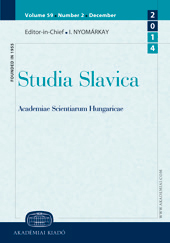Južnoslovenski aspekti u mađarskim filmovima
South-Eastern Aspects of Hungarian Films
Author(s): Imre SzíjártóSubject(s): Film / Cinema / Cinematography
Published by: Akadémiai Kiadó
Keywords: Hungarian films; South Slavic cultures; Yugoslavian characters; imagology
Summary/Abstract: The paper explores Hungarian films that make reference to South Slavic cultures. The author examines the problems of cinematic representation and employs the methodology of imagology. The core question of the paper is how Hungarian films represent Yugoslavian (or ex-Yugoslavian) characters. Márk Bodzsár’s Heavenly Shift (Isteni műszak) is set in 1992, events on the minor storyline take place in Sarajevo, while the protagonist of the main storyline is an ethnic Hungarian from Vojvodina who illegally crossed the Serbian–Hungarian border. The story of Ibolya Fekete’s Bolse vita begins in 1989: the Russian protagonists of the film would like cross over Western Europe through Yugoslavia, and the film ends with archival footage of the ex-Yugoslavian conflict. The protagonist of Ibolya Fekete’s Chico takes part in this conflict on the Croatian side and the film depicts events of the war from this point of view. Attila Till’s Kills on Wheels (Tiszta szívvel, 2016) features a character of Serbian origin who is portrayed through devices of black humour.
Journal: Studia Slavica Academiae Scientiarum Hungaricae
- Issue Year: 63/2018
- Issue No: 1
- Page Range: 139-145
- Page Count: 7
- Language: Croatian

